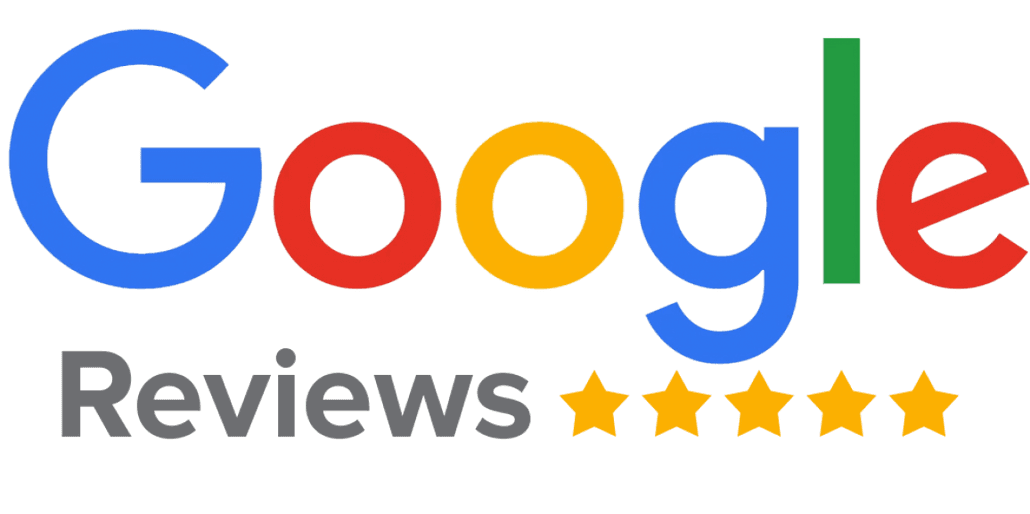5 Reasons Why Every Business Should Be Investing In SEO
From a business perspective, SEO is one of the best investments you could make. It’s something that you shouldn’t avoid. By embracing it, you’ll be broadening your horizons to experience something surreal.
Over the last couple of years, there have been many changes in the SEO world. Google has many a time revamped the search console with new crawl limits whilst ensuring that they were able to improve upon a couple of their products.
These updates to their algorithms and other ranking factors have only gone ahead to bolster the quality of their service dispensation.
In our guide today, we’ compiled a handy guide that lists out 5 key reasons why you need to put more focus on SEO going forward.
1 - Long-Lasting Results for your Business
To reap the full benefits of SEO, you need to think of it as a long-term strategy. Once you embrace this kind of thinking, you’re bound to realise considerable advancements in your business.
Many people who are new to SEO usually wonder about the length of time necessary for them to rank number one based the keywords used.
Constantly worrying about this one statistic is not the best way to go. Instead of getting exasperated about the lack of changing tides within a month or two, it’s best to be patient for soon enough, the results will speak for themselves.
When starting a new website, you need to be prepared to wait about 6-12 months before you start seeing results. While this may seem like a lifetime, when it’s done correctly, you will be able to maintain your website on SERP which may have a long-lasting impact on your success. The main reason for the duration is because you have to build backlinks to your website to help it rank higher in Google, unfortunately, you can do build 1000+ backlinks overnight. It might be done gradually over time.
If you’re currently running a business, we’re certain you’re already aware of the benefits of having a portfolio to generate conversions. With better search visibility, it becomes easier for you to market your wares to all and sundry. SEO guarantees that you have visibility in SERP, later on, you’ll reap the full monetary results.
2 - Impressive ROI
Provided you have a healthy budget and are actively engaged in marketing your products and/or services, SEO will ensure that you have a great return on investment.
That said, it’s not wise to set unrealistic goals. Instead, you need to budget for about 6-12 months of SEO, else, you might end up losing money. Since you want to benefit rather than lose investments that would have been better spent elsewhere, it’s important that you wait it out. Simply forking cash for a couple of months is not enough to realise the kind of results you want to see.
There’s good data showing that about 40% of revenue is usually sourced from organic traffic. In light of this, it’s best that you put in the work to capture these organic searches. This is quite important when you consider that a significant 18% of local smartphone searches also resulted in a purchase within the day.
3 - Organic Search is usually the Key Source of Traffic

Organic search plays a central role in generating a website’s traffic. Numerous studies conducted show that businesses need to put more emphasis on strengthening organic search. One finding revealed that about 51% of website traffic usually emanates from organic search. Interestingly, only 10% of the net traffic usually arises from paid search, 5% from social media channels and the remainder 34% typically arises from other sources.
In light of this info, it’s evident that search visibility is an integral part of the equation. Google seems to like websites that are trusted by a majority of the population. To ensure that you’re in good books with the search engine behemoth, it’s necessary to conduct frequent website optimisation operations. Doing so only serves to boost your ranking on the first page of search engine results.
4 - Compared to Paid Search, SEO Can Be Economical
When you consider the long-time investment in SEO, it’s considerably for you to promote your business using SEO than other paid search tactics.
True, you may have to pump plenty of cash in the initial stage than most paid advertising strategies. Still, the overall benefits still outweigh paid methods which usually require you to keep handing out money every other month to ensure that you keep receiving traffic on your website.
Compared to SEO, paid search marketing usually has a shorter lifespan in terms of making conversions. Results are only present for as long as you keep making payments. On the flip side, SEO is more a long-ball tactic which puts it as the safer option.
5 - SEO is Quantifiable
With SEO, you can get insights into how your business is fairing from the analytics on your website. The only challenge you’re likely to face is getting the data yourself and deciding the avenues which need improvements.
If you’re a newbie, comprehension of the data may be hard. It’s highly likely that you’ll have to invest plenty of time breaking down the data into tinier digestible pieces before taking a course of action. Experienced SEO analysts usually start things by separating the wheat from the chaff.
Notably, there exists a suite of tools in the market which can help you monitor the performance of your website. ClickSlice recommends Google Analytics as it can easily help you learn more about your audience and their preferences, your major sources of traffic, and how your content is consumed.
3 Reasons Why You Should Use WordPress as your CMS
It’s always nice to change up every once in a while. Maybe you’ve tried out other content management systems like Joomla or Drupal when you were just starting out. Inevitably, you outgrew these options. If you’re looking for more functionality and a whole new toolbox to play with, then it’s time for a CMS upgrade.
When it comes to CMS solutions, WordPress is up there with the best of them. While other platforms like Drupal get lauded for their active community, Expression Engine is favoured by the technically gifted, and Alfresco quickly converts files into webpages, WordPress still has a charm about it.
If you’re intrigued about what WordPress can offer for your business, take a quick look at the top 3 reasons we you need to embrace WordPress as your CMS.

1 - It’s been around the Block
WordPress made its way into the scene back in 2003, before anyone really knew what blogging or CMS was.
During its early years, the platform was largely a resourceful tool for bloggers. However, as the years rolled on, WordPress remarkably gathered no moss. It’s now become synonymous as the go-to platform for all kinds of businesses.
WordPress is just as popular among programmers as it is for those who aren’t too tech savvy. Interestingly, one stat shows that with each passing day, about 500 new websites are developed using WordPress.
As a platform, WordPress has attracted plenty of people looking to bring their websites up to par. With an impeccable development team driving its progress, WordPress has not slouched in any sense since it came into being.
If you’re in the market for a plugin that will stitch-up and enhances your SEO strategy, WordPress is the way to go. If you’re looking for a unique theme that makes your business stand out, WordPress is all it takes.
In essence, WordPress has you covered in almost every department you can think of. There are a ton of third parties on the platform which have come up with fantastic themes, plugins, and widgets which have quickly become fan favourites.
2 - Simple & Robust
Compared to its contemporaries like Joomla and Drupal, WordPress has a very intuitive interface. All the features they have on offer are quite easy to use. This makes it the perfect platform for noobs in the industry to start out.
Even the most complicated of tasks are heavily simplified for enhanced user experience. This simplicity has really endeared the platform to many users over the years. This WYSIWYG (What You See Is What You Get) concept has been fantastic to their bottom line.
By eliminating the need to code, WordPress successfully tapped into a market that many other platforms hadn’t envisioned. Businesses have been drawn en masse because of this attribute since they are able to save on time and monies that would have otherwise been spent hiring on-staff programmers and web designers. It’s a real treat.
Having divulged all this, it’s quite easy for one to think that WordPress is not robust enough because of the simplification of tasks. In truth, nothing could be further from the truth.
Aside from the powerful functionality, WordPress has a thriving online community who actively engage to provide solutions to issues encountered. It is through such forums that users concerns get answered and development proceeds without a hitch.
3 - Free & Versatile
Wait, did we mention that WordPress is free? Well, it is!
While many other CMS platforms require their users to cough up the dough in advance, WordPress gets availed to users absolutely free. This zero-dollar price tag has been quite effective in attracting so many enterprises looking to make their mark in the market.
That said, it’s worth noting that some of the competition offers free packages, but, most of the plugins that they offer come with a price tag. While it’s true that some WordPress plugins are also available at a price, most of them are free or have an attached freemium version for users to test the waters with.
The fact that you can literally do anything you want with WordPress is also a bonus feature. While the platform was all about blogging during the nascent years, it’s taken in plenty of web developers within its wingspan over the years.
Enterprises love WordPress because anyone with some IT knowledge can update them. Excitingly, it doesn’t take a web development guru to implement a couple of changes to the content.
As a plus, businesses are able to save plenty with WordPress. Instead of having two platforms, one for website creation and another for blogging, WordPress is able to combine both functionalities without the need to outsource elsewhere.
As its evidently clear, WordPress is your best bet if you’re looking for a friendly CMS that will ease your workload. There are also tons of security plugins you can install on your site too to help prevent your site from being hacked by hackers.
Try it out today!
Rocket Your Rankings with a Solid SEO Strategy
ClickSlice is an SEO agency in London, who specialise in boosting the search engine rankings of company websites. We take an individualistic approach to SEO and work with businesses to develop a plan that works best for their specific situation.
For more information on how we transform businesses through the power of organic internet traffic, contact ClickSlice today on 020 3287 3638 or email us at hello@clickslice.co.uk.
5 Tips to Protect Your Website from Hackers
If you own a webpage, nothing can be more depressing than the knowledge that a platform you spent eons developing has crumbled right before you thanks to the efforts of a hacker.
To avoid becoming a casualty of this, it’s a good practice to ensure that you take time to shield your website using our 5 point action plan. As we delve into the various ways to protect the data on your website, we’ll also share actionable intel on how to conduct checks to see just how secure your website is.
Having a data back-up system in place is a good idea. Even then, protection is always a better alternative. Let’s dive right into the content.
1. Install Security Plugins
Right after you update every other component of your website, you need to take things up a notch by installing security plugins to lower the chances of your website getting hacked.
If your website runs on WordPress, you can review security plugins like Bulletproof Security and iThemes Security which do an impressive job of shielding the content on your page from leaking out. They are able to do so by masking any security vulnerabilities from hackers and thereby foiling any ill motives.
On the other hand, if your website runs on some other HTML page or CMS-managed platform, you can take a quick review at SiteLock. Over the years, SiteLock has become known as a great security tool for sealing loopholes and providing tracking tools for everything from vulnerability identification to malware detection. It’s regarded as a prized asset among those who are keen on ensuring that there are no data leaks from their webpages.
2. Make use of HTTPS
As someone who’d frequently on the web, you may already be on the lookout for that green https browser bar every time you check out a website. If not, that’s what you should be focusing on.
HTTPS websites are usually an indicator that all is clear for you to conduct financial transactions on such platforms.
Recently, Google Chrome released a new security update which alerts visitors about pages lacking installed SSL certificates. This SSL certificate is of the essence in securing the transfer of personal and financial information over the web.
It’s also worth noting that search engines are aggressively pushing the campaign for a safer internet where information exchange can occur without inhibitions. If you’re looking to be in good books with them and rank higher in search results, it’s best to make the change and implement the new security protocols necessary for your site to become HTTPS approved.
The extra level of encryption offered by an SSL certificate is a great investment for your business since you’ll be able to reap the long term benefits.
3. Update Your Website Platform and Software
By updating your plugins, apps, scripts, and content management system on the regular, you’ll be taking the next step in protecting your website from hackers and malicious individuals.
Doing this is necessary because most of these tools are open-source software solutions which means that their code is accessible by all and sundry. Hackers who are intent on bringing your brand down can easily pore over this code and exploit all the security vulnerabilities they can spot and seize control of the website.
If you’re running a WordPress website, you can check the dashboard every time you log in for a peek at whether there’s a notification about an available update.
4. Secure Your Passwords
As alluring as having a universal password is, it’s not the best way to go about website security. The most popular password in the world today is 123456, if you have something along those lines, then it’s best to act quickly and implement a change today.
You need to take some time in figuring out the most unique, secure password that will be easy for you to recall. Incorporating special characters, numbers, and letters is a great way to go about it.

Importantly, you need to keep clear of obvious targets like birthdays, and pet names. This is because these are usually the first things hackers typically inquire about as they prepare to launch an attack.
A single point of weakness is all it takes for all the cards to come tumbling down. As such, you need to take necessary precautions.
5. Use Parameterised Queries
SQL injections are among the most popular website hacks in the world. These attacks arise when you have a web form that allows visitors to your webpage to feed you information.
If the parameters in the field of entry are too open, it’s very possible that a hacker will be able to key in the code and gain access to your database. To avert scenarios like data loss, it’s necessary to shield your site from this.
By using parameterised queries, you can inhibit the playroom for hackers to exploit and plant their code into your system.
Best Onpage SEO Tools and How to Use Them
On-page SEO is of the essence because it plays a major role in how search engines like Google comprehend the content on your webpage.
In light of this, it’s is your job to ensure that all the content on your webpage is optimised from a subset of chosen keywords. Once this is enforced, you will find it easy to rank higher in SERP.
When you don’t have good onpage SEO, it becomes harder for you to stand out in your industry. This is especially true when you consider that there’s every possibility that your competitors have already optimised their pages to rank higher in search results.
While you may have a compelling backlink profile and awesome content, you may find yourself overshadowed by others simply because your webpage falls short in onpage SEO.
Key Elements of Onpage SEO
The most vital part of onpage SEO are the actual keywords you decide to target. If the keywords you select are too competitive, you’ll be inhibiting your chances to rank, irrespective of how well you optimise your page. To get a better understanding of what keywords are good to target for your London based business, we recommend to hire an SEO consultant as they will have extensive knowledge and know exactly what keywords are too competitive.
If you don’t then it’s important to conduct proper keyword research. When you do this, you’ll be able to find the best phrases with the highest search volume that you can target.
Having identified which keywords you’ll go with, your onpage SEO strategy needs to be focused on optimising your webpage for those particular keywords and their semantic options.
It’s also worth documenting that you need to sort out your title tag, the header tag, image alts and optimisation in the content itself. ClickSlice can help with that if need.
Here’s a breakdown of the top Onpage SEO tools in the market.
1 - Ahrefs’ Keyword Explorer
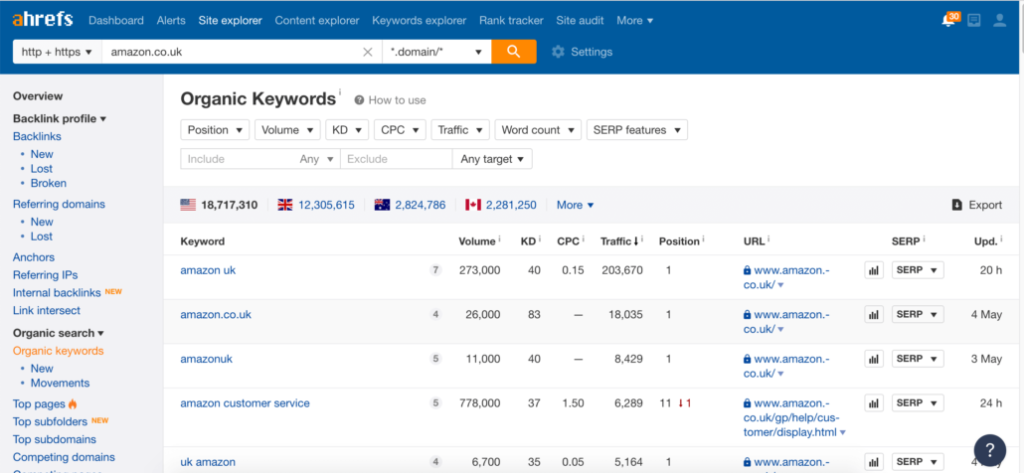
As divulged earlier, keywords are critically important in SEO campaigns. Not only do they provide you with a target to aim for, but they also guide your optimisation efforts.
While all this sounds quite easy on paper, keyword research can be quite tasking, especially if all you have is the Google AdWords tool.
With Ahrefs’ Keyword Explorer, you can ease the workload by a significant fraction. This SEO tool is quite handy in that it allows you to discover new keywords to target whilst showing you all the backlink data. The fact that it enables you to conduct comparison tests on different keywords makes this tool a gem.
2 - SEOCrawler
A number of businesses use SEOCrawler as their key onpage SEO tool. The Site Auditor feature is probably their most impressive asset. With it, you can analyse a page in a swift manner and get updates on page speed, duplicate content, broken links, and keyword optimisation. Impressively, all this is provided in an instant.
With such automation features at your disposal, you can save plenty of time and divert your attention towards more lucrative ventures out there.
The Site Auditor feature also provides users with suggestions on how they can enhance their webpage for more effectiveness. With the changes made, you can monitor just how impactful the changes were on the Rank Tracker.
3 - Copyscape
This neat tool is particularly useful if you’re outsourcing the services of a copywriter for your brand. Since Google favours original content, it’s imperative that the content that’s delivered to you is in no way duplicated from other platforms.
To get started with the tool, all you need to do is paste content into their editor and it will scan its records before letting you know just how unique the copy is.
4 - Google Developers PageSpeed Insight
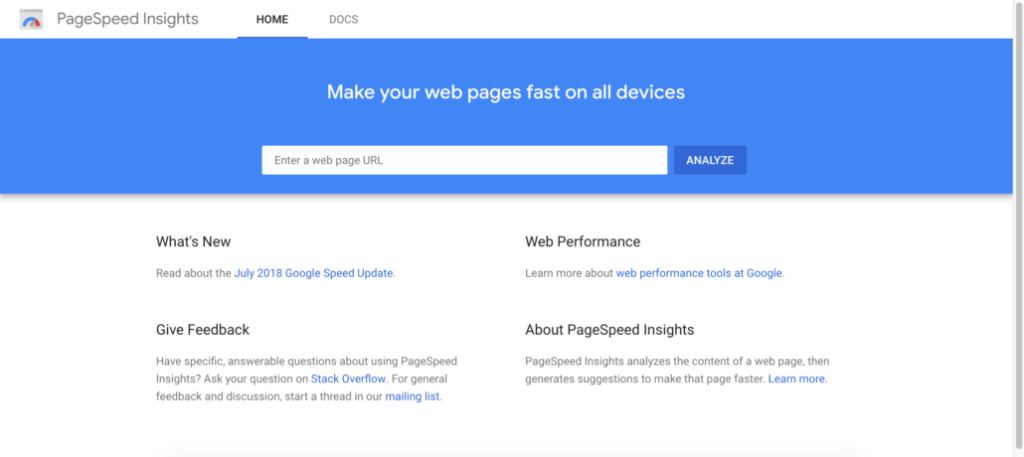
Cognizant of the fact that an increasing number of people conduct internet searches on their phones, Google has upped the ante by introducing page speed as part of their ranking factors.
In today’s world, websites have to ensure that their pages load fast. When they do, they’re likely to win over a significant section of the mobile community. If you’re looking to rank favourably with mobile users, it’s up to you to ensure that your pages load swiftly after launch.
You can make use of the Google PageSpeed Insight tool to analyse just how fast your page is. The tool does a great job of suggesting a couple of improvement areas that can take your page to the next level and rank higher in SERP’s.
5 - Moz On-Page Grader
This tool does a great job of analysing your webpage and notifying you just how it compares to their specially curated checklist of SEO factors. After analysis, the tool gives you a result that indicates the overall grade of your website with suggestions on how to make enhancements.
The real beauty of Moz On-Page Grader is that it has an intuitive design which makes it the perfect tool for novices. If you’re looking for a tool that will guide you through the ropes of onpage SEO, this is the best way to get acquainted.
How important is Anchor Text for SEO
Anchor text refers to the visible, clickable part of the text in a webpage. In many situations, anchor text appears in a different colour from the rest of the text on the page.
A well-crafted anchor text is one that communicates with readers what to expect once they click upon the link. As such, you need to invest some time in getting your anchor texts just right. By doing so, you’ll be boosting the odds of Google understanding what the webpage you’re linking to is about.
Search engine platforms like Google are quick to spot anchor text and the pages being linked to. Their algorithm is powerful enough to comprehend the relationship and relevance of the target demographic. The more relevant the links are, the better your odds of having your website rank highly in search engine results pages (SERPs).
In essence, if you were to come up with a link to a page that uses the anchor text “prized medallion”, search engines will see this as a sign that the page being linked to fits perfectly with searches on prized medallions. It’s very straight forward.
Grow your Brand
Search engines love to check out pages that have a strong brand image. By making use of branded keywords, you can help grow your brand profile in your trade.
In addition to this, the more people see your brand name in the public domain, the more likely they are going to search for it. When this happens repeatedly, your brand becomes your most powerful keyword.
When you use your brand name in the anchor text, you’re able to build a narrative for your business. You can tailor your content however you like people to view you. By taking the reins on how your brand story is told, you’ll be controlling the perceptions people have of you.
Types of Anchor Text
It’s worth noting that anchor text has plenty of relevance for both internal and external links. External platforms can link to your content in a number of ways.
- Branded links: These make use of brand names as the anchor, e.g. “ClickSlice”
- Plain URL: The site URL can be posted without any accompanying text e.g. “https://www.clickslice.co.uk/”. In many situations, this is not usually helpful.
- The Site name e.g. “co.uk”
- Article Title: This type of anchor text is typically derived from the article title e.g. “How important is Anchor Text for SEO”
- Exact keywords: This makes use of a key phrase as the anchor text
- Partially matching keywords: consists of different variations of the focus keyword to develop a readable link
- Related keywords: makes use of a key phrase that has a relation with the main keyword
- Generic links: It’s okay to use generic links, just try to stay away from cliché text like “Click here”, and “Read more”.
How to Go about It
Developing relevant anchor text is crucially important. What you come up with needs to provide real value to users.
While at it, it’s imperative that the conversation stays natural. There’s no need to force your statements as you try to fit in exact matching keywords. A good way to do this is to imagine saying out the statements you write out loud if it doesn’t sound natural, then, there’s really no need to write it.
Finally, avoid using lengthy words as anchor text. Instead, try to keep everything concise.
What you should avoid
During the early years, you could do as you pleased when it came to crafting anchor text just to grab a hold of the top spots in SERP. Some people even went as far as using the same exact keywords for all the backlinks on their page.
While such schemes tended to boost website ranking back then, all of that changed once Google dropped their very first Penguin update in 2012. That one move changed the link building scene forever.
At present, Penguin scours the web in search of low-quality link building practices. Using anchor text, Google can tell which websites make use of artificial backlinks just to rank highly. The websites which are found to be in violation are usually penalised. Instead of worrying about getting your site penalised, It’s best to hire an SEO Consultant in London like Josh, he can help you with the basic SEO and consultancy elements along the way.

Having shared that, here are some safe practices for you to follow as you develop your anchor text.
- Don’t use spammy anchor text in a bid to get more traction on your platform
- Don’t use too many keywords in the anchor text
- Avoid using text that has doesn’t relate to your agenda
- Don’t try to customise the links too much in a bid to be unique. Keep things simple instead, contrasting font color and/or underline is sufficient. Else, people may miss your links.
What Are Backlinks and How Important Are They?
If you’ve dabbled in the world of Search Engine Optimisation, there’s a fairly good chance that you’ve encountered the term “backlink” at least once.
For those new to the SEO scene, it’s important for us to demystify what backlinks are and just essential they are.
In the current setup of SEO, backlinks play a pivotal role. With that in mind, we’ll invest some time trying to fully elaborate just what backlinks are why you need to embrace them in your marketing strategy. As we provide this in-depth analysis, we’ll be sure to mention a couple of pointers on what you can do to help gain them without going against the rules of play defined by search engine algorithms.
Definition of terms
Backlinks refer to a link found on another website that directs visitors back to yours.
In a way, you can view backlinks as the resultant product from link building. So, what exactly is link building? Well, this refers to the process of getting hyperlinks from other websites to your own landing page.
A hyperlink (in simple terms known as a link), describes the way users are able to navigate the various pages on the web. Since search engines use links when crawling through the web, it’s important to come up with ways in which you can assist the algorithm to find a connection between your platform and others.
When it comes to building links, the difficulty is of varying degrees. That said, many analysts in the world of SEO tend to agree that link building is one of the most complex aspects of the job. Since many SEO experts invest heavily in devising ways of doing link building just right, it’s quite important to master the very art of developing high-quality links. Once you’re able to master this art down to a tee, then you can stand tall against the competition.
The Importance of Backlinks
Relationship Building
Since backlinks usually involve outreach to other relevant websites and blogs in your industry, there’s a fairly good chance you can establish a good rapport as you go about your business.
Having such partnerships with key influencers in your trade can lead to bolster your brand’s image. This means that backlinks are a valuable business strategy since it creates unpretentious believers and evangelists for your enterprise.
Referral Traffic
Already, we’ve referenced just important backlinking can help improve your search engine rankings. What we’ve not shared is that backlinking can also help improve the traffic to your website.
While being exposed to a large audience is a fantastic strategy, there’s also plenty of benefits to be found in being exposed to a smaller community of passionate supporters.
In essence, striking the right cords that resonate with keen supporters of a particular blog is where you should launch every backlinking campaign. Then, you can seek to grow further outwards.

How to Get Backlinks
Given just how important backlinks are in determining how your website performs in search results, it’s necessary to come up with a firm backlink foundation.
It’s worth noting that getting backlinks is often a lengthy and mind-numbing process. However, to save time you can can outsource the link building process to a dedicated link service like Linkplicity, who are known for delivering high quality backlinks across a wide spectrum of niches.
Thankfully, there are numerous ways for you to get backlinks if you would rather do it in house, all of which are helpful in building your website’s backlink portfolio.
Online & Local Directory Submission
Having your enterprise listed in online and local directories can benefit your cause with a strong backlink, despite the fact that they may be nofollow backlinks.
Despite this, having your business in directories like Yellow Pages, Yelp, and Four Square makes it relatively easy for prospects to find your website, check out the reviews and decide whether you’re the best option to handle their issues.
Notably, Google’s My Business pages give users the ability to have their businesses and website on Google Maps. This can massively help you connect with clients looking for your services. Should you decide to take this option, make sure that you’re listed with the correct name, phone number, and address unfailingly all through the online directory listings.
Guest Blogging
This has quickly gained prominence as one of the best ways for businesses to generate high-quality follow backlinks. Guest blogging on other websites within your niche usually helps build your brand reputation.
While it’s relatively more time consuming than the other options highlighted, it’s still regarded as the best way for enterprises to come up with high-quality backlinks. For you to start off as a guest blogger, you need to look up quality sites within your trade and discover which ones give you the freedom to guest blog.
After you note them down, you’ll need to make sure that the content you develop conforms to the provided guidelines and send it over to them for review. Before you dispatch it, ensure that you include a link back to your website somewhere in the copy. This is usually the key premise of guest blogging.
While it’s true that many websites aren’t usually interested in a guest blog, you’re sure to find a couple that wants to get such services, especially when they keep in mind the free content they’ll be receiving thanks to the backlinks.
Blog Comments
This tactic can be quite rewarding to your website. You can register backlinks to your website by checking out a good number of authoritative websites, review the blogs shared and leave comments on them expressing just how wonderful the content was. Right before you leave, ensure that you pose a thoughtful question. While at it, also don’t forget to link back to your website.
While there’s a high chance these are likely to be nofollow backlinks, they can still help build a good rapport with influential companies and websites in your industry.
All the same, you need to ensure that you only comment on suitable and pertinent posts for your industry. Else, the comments you leave may be regarded as spammy and you may find your comment barred by the website administrator.
Parting Shot
Having listed out a couple of backlinking manoeuvres to gain strong inbound links for your website, you should not forget that you still have to put emphasis on devising content that will need backlinks itself. This process is no different than the content you discover to comment and share a link of your platform. If you pen amazing content that’s beneficial to members of your industry, the odds are that they’ll start to link to it all on their own.
If you require help with any of the processes stated above then feel free to get in touch with our SEO Consultant Joshua George and he will be more than happy to offer some solid consulting services to help you get things in order.
How Has Googles Latest Core Algorithm Update Re-shaped SEO?
Back in March, the SEO community was shaken by a particularly influential core Google algorithm update.
On the 12th of the month, Google confirmed they had yet again introduced substantial changes to the code that’s responsible for indexing and listing billions of web pages in the world’s most popular search engine.
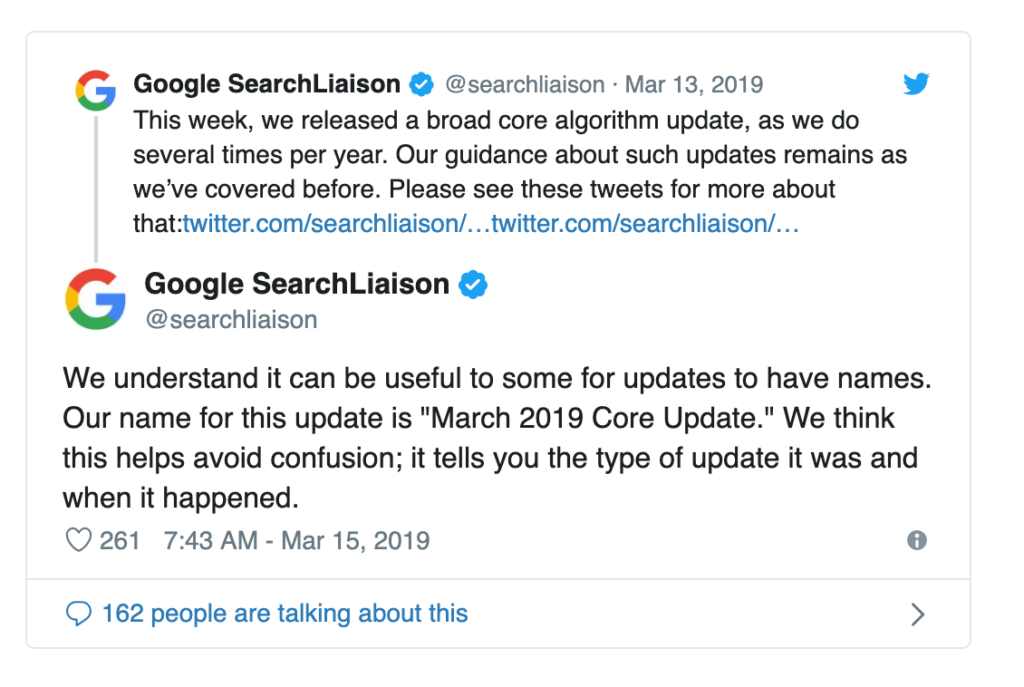
It was the first major roll-out of the year – and Google’s search team have since hinted that we can expect more broad updates to take place in the weeks and months to come.
For now, though, some SEOs find themselves frantically adjusting their search strategies in a bid to recover their search traffic and ensure their websites adhere to Google’s newest set of guidelines.
Was Google’s latest algorithm update a surprise to SEOs?
Not really. Google can be notoriously tight-lipped about its updates, but we expect its search engineers to release at least three or fore ‘core’ updates every year.
Other minor tweaks are taking place all the time, but these bigger, broader updates tend to have more of an influence on the search engine results pages (SERPs).
How do we know it’s for real?
Google doesn’t always tell us when it’s going to release a core update – but Danny Sullivan, Google’s own search adviser, was the one who officially confirmed this latest roll-out via Twitter on 13th March.
How has the March 2019 Core Update impacted search positions?
Some health sites have been widely affected…
Data analysis has shown that the latest Google core algorithm update has mainly affected websites that sit within the health and finance industries.
Some marketers refer to these sites as ‘Your Money or Your Life’ (YMYL) platforms, because they contain content that could encourage the reader to make life-changing decisions.
…whilst others have recovered spectacularly
However, what’s interesting is that this most recent algorithm change has improved the fortunes of many of the health websites that fared badly after Google’s last large-scale update, which took place in August 2018 and was dubbed the ‘Medic’ Update thanks to its seemingly negative impact on many health-related domains.
Webmasters have lost positions for niche pages
Research carried out by Searchmetrics has suggested that websites that have been created to talk about one single, health-sensitive subject have suffered the biggest hits.
They have theorised that these single-purpose sites simply don’t look as trustworthy to Google, which appears to be favouring high authority platforms that deal with a wider range of topics (especially for sensitive health-related keywords that typically return a higher volume of YMYL sites).
User signals are more important than ever
Sites that can keep their users engaged for longer seem to have benefited the most from this core algorithm update. Again, this indicates that user trust is becoming increasingly important to Google.
Domains that achieve more page views per visit and have a lower bounce rate have been awarded with better rankings across the board. On the flip side, those that are struggling to keep readers onsite have seen noticeable drops in positions. This tells us that Google is using basic engagement data to determine whether or not the page is a valuable or useful resource for browsers.
What actions do you need to take to make sure your site isn’t affected by this core update?
We can’t deny that the March 2019 Core Update has left SEOs who are responsible for optimising YMYL sites feeling a little nervous.
But for everyday webmasters, it’s very much business as usual.
If you want to avoid being penalised by any of Google’s core algorithm updates, focus on:
- Improving the accessibility and usability of your site
- Creating unique, engaging content that encourages your readers to stick around on your pages for longer
- Building on the authority of your domain by claiming links and citations from trusted, relevant sources
Stick to these three principles, and you should never see your positions plummet as a result of a core Google update.
If you think your website has been adversely affected by Google’s March 2019 Core Update, talk to the team of experts here at ClickSlice. We’ll benchmark your current performance, then suggest an update-proof search strategy that’s designed to increase your search exposure sustainably over time, without resorting to poor practice or bad SEO tactics.










